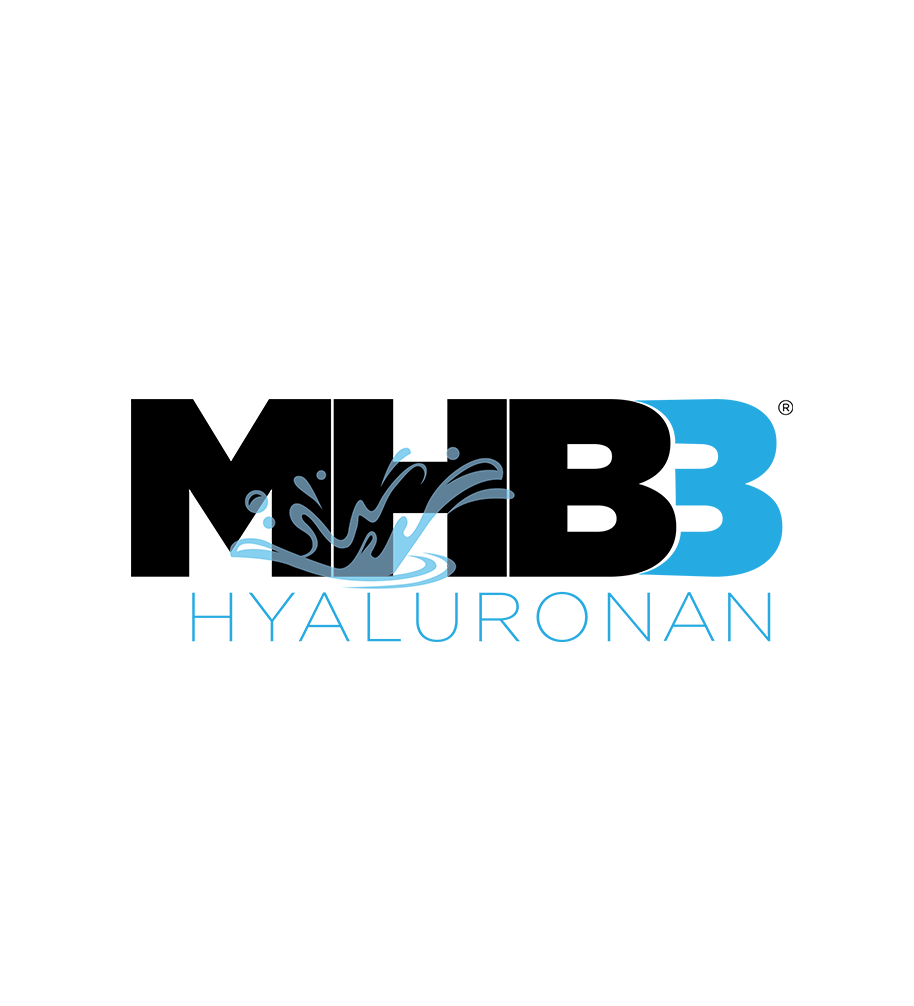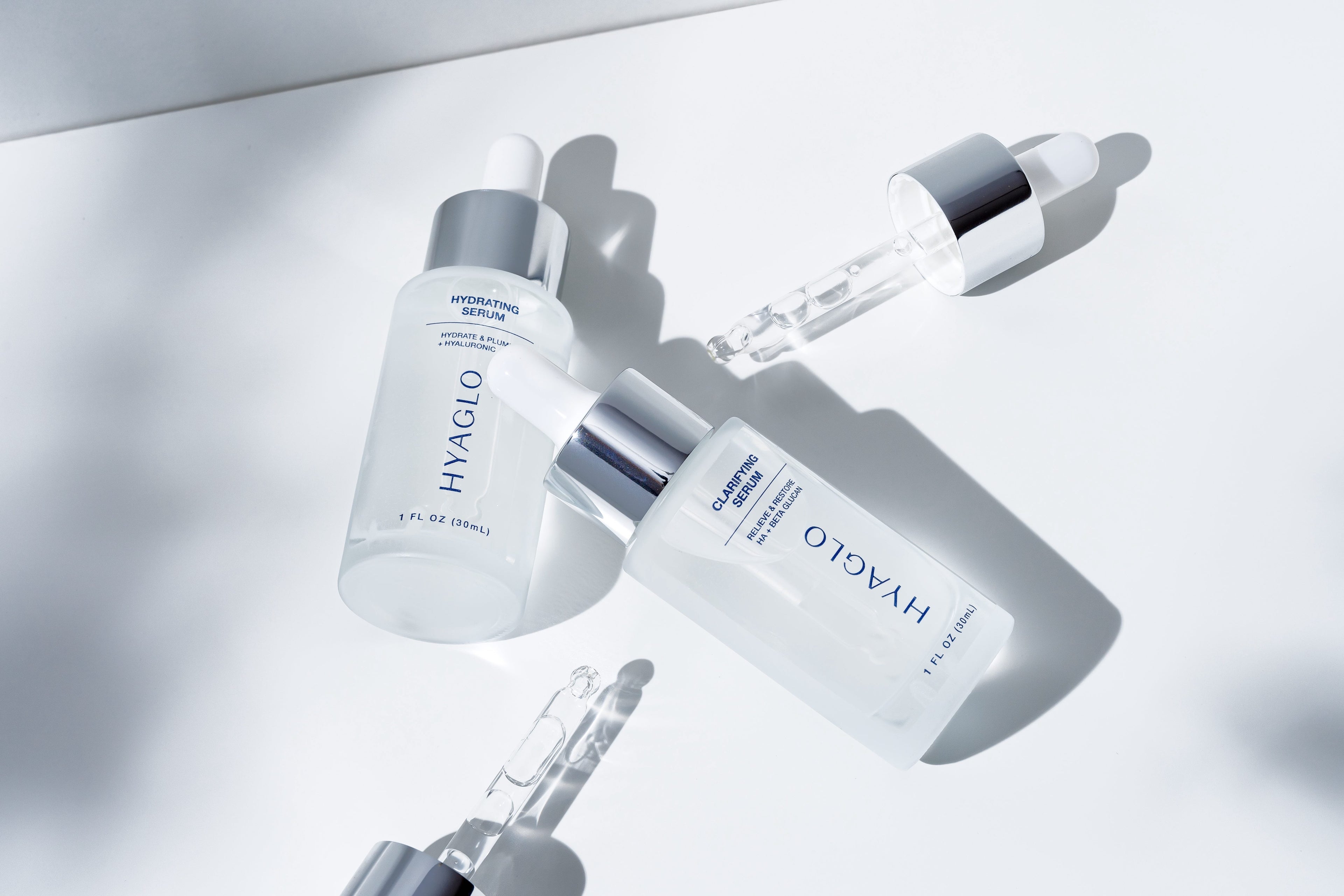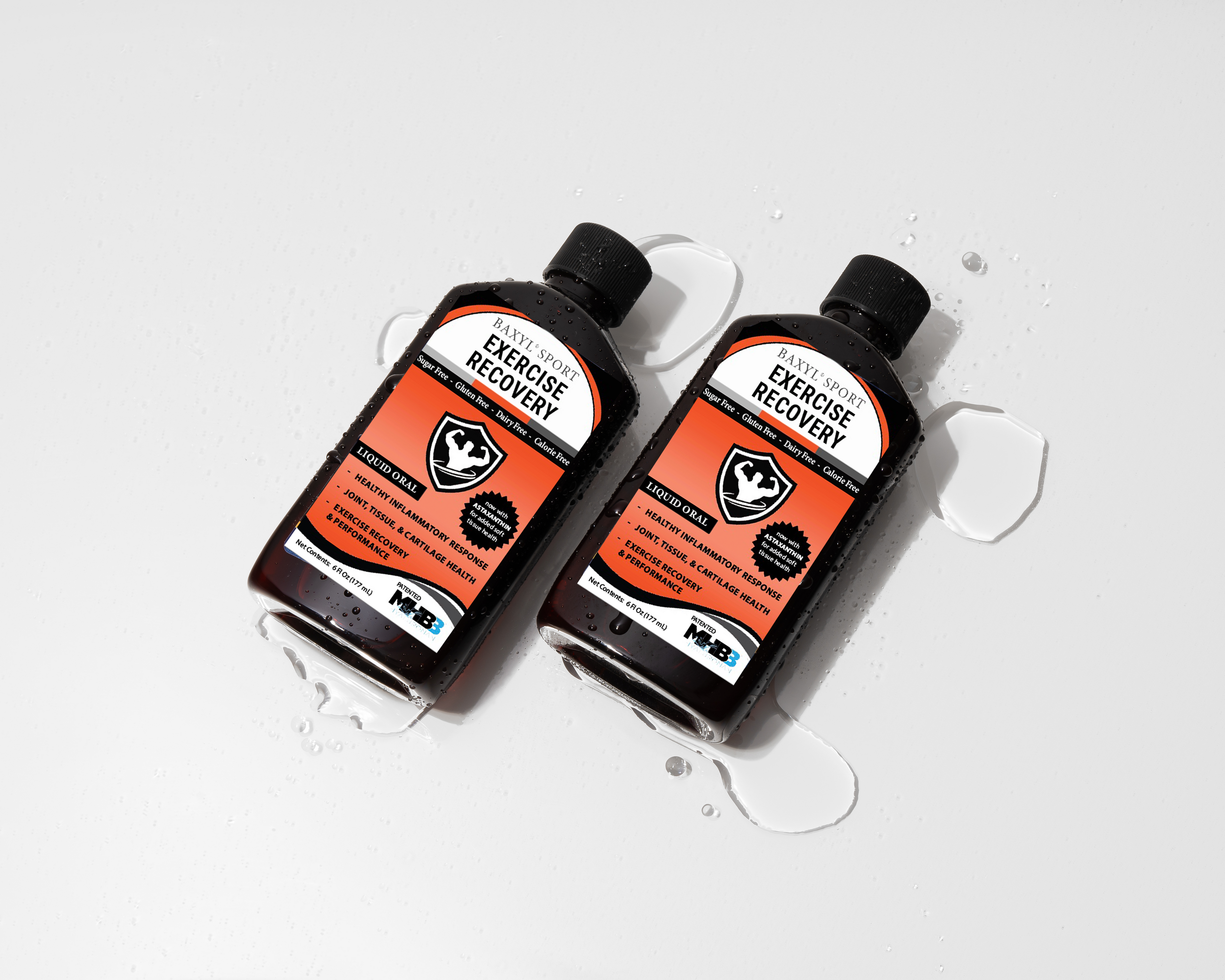What is Hyaluronic Acid?
Hyaluronan is the accepted scientific nomenclature for hyaluronic acid (HA) and physiological salts of hyaluronate, the conjugate base of hyaluronic acid. Hyaluronan is classified as a glycosaminoglycan (GAG). GAG’s are long, unbranched polysaccharides that are made of repeating disaccharides composed of glucuronic acid and glucosamine (Fraser, 1997). The polymer chain of hyaluronan ranges in molecular weight from hundreds of units (or Daltons) up to several million. Hyaluronan is found ubiquitously throughout the mammalian body. It is either directly or indirectly involved in every physiological function of the body. It is found in dense concentrations in cartilage, synovial fluid, skin, vertebral discs, bones, urinary tract, cardiac valves, eyes, and various other soft tissues. Hyaluronan is most abundant during embryogenesis and declines in overall quantity and quality throughout life (McDonald, 2002).

Patented Hyaluronic Acid
- Active ingredient in all Baxyl® products
- Fully-hydrated hyaluronan supplement
- Proven results through clinical research
- Liquid supplementation with MHB3 is proven to be 3.8x more effective than dry forms of hyaluronic acid
- 8 U.S. Patents for prevention & maintenance of osteoarthritis, osteopenia (precursor to osteoporosis), osteophytes (bone spurs), and joint support
Bone and Joint Health
Canonically, hyaluronan is recognized for its role in the maintenance of joint health. Hyaluronan is naturally synthesized locally by synoviocytes within the joint and once produced, it binds to collagen and elastin to form articular cartilage. It is the presence of hyaluronan that makes cartilage strong enough to handle compressive forces within the joint (Seog, 2002). Hyaluronan is also found in unbound form in the synovial fluid, where it provides the major source of lubrication that allows for smooth fluid movements in joints (Sabaratnam, 2005).
Hyaluronan within the synovial capsule is critical for smooth joint movement: the articular cartilage encapsulates the ends of the bones forming a smooth while synovial fluid forms a film of lubrication over the articular cartilage during movement. Combined, these structures protect the bones from frictional grinding (Walker, 1968).
Within bone itself, the presence of hyaluronan is primarily linked to its roles in bone modeling and remodeling processes. Hyaluronan has been shown to regulate bone remodeling by stimulating osteoblasts and osteocytes as well as inhibiting osteoclasts (Bastow, 2008; Prince, 2004). Intriguingly, hyaluronan taken orally has been shown to reduce urinary markers of bone resorption and ovariectomy-induced bone loss (Gerdin, 1997), indicating that hyaluronan may suppress bone resorption.
Scientific & Effective Ingredients
-

Astaxanthin
Found only in Baxyl® Sport, astaxanthin is a natural red algae that acts as an antioxidant & assists with soft tissue health, muscular recuperation, and exercise recovery. Because astaxanthin is an aquatic algae, it has a briny aftertaste. Athletes and those who work on their feet and legs regularly can benefit from the daily use of astaxanthin. Taken twice daily, users begin to notice results in a few short weeks. Don’t let the fear of aching joints prevent you from enjoying running, walking or enjoying other sports and entertainment you enjoy or keep you from performing your job when on your feet and legs for hours at a time.
-

A.O. Prebiotic
Aspergillus oryzae (A.O. Prebiotic) was created by our parent company, BioZyme® Inc, using a proprietary, multi-step process that has been refined over the last 70 years. AO-Biotics® Amaferm®, found in Baxyl® GI, is a prebiotic research-proven to enhance digestibility, while supporting a healthy gut microbiota. With 70% of the immune response found in the digestive tract, a prebiotic like AO-Biotic Amaferm helps improve your overall health. There are numerous varieties of AO found in food and health products, however, when we refer to AO, we are talking about our proprietary strain.
-

Lion's Mane Extract
Lion’s mane extract is derived from lion’s mane mushrooms that are found to be very nutrient-dense and filled with essential vitamins and minerals. The lion’s mane mushrooms are rich in thiamine, riboflavin, niacin, manganese, zinc and potassium. Research shows that the lion’s mane extract is rich in beta glucan content that supports enhanced gastroprotection and further encourages the growth of good gut bacteria with prebiotic fiber. Lion’s mane mushrooms are a great source of oligosaccharides, a specific type of carbohydrate that have many critical biological functions including antioxidative and anti-tumor activities.
Skin
One of the primary functions of hyaluronan is maintaining tissue hydration. Interestingly, hyaluronan is so hydrophilic it can absorb, retain, and deliver over one-thousand times its weight in water (Wand, 2007). The ubiquitous nature of the molecule ensures that hydrophilic delivery takes place throughout all tissues. Hyaluronan is found most prevalently in the skin; approximately half of the total body hyaluronan is located within the dermal and epidermal layers. The primary functions of hyaluronan in the skin include moisturization and hydration (Meyer, 1941). Skin turgor is the result of the ability of hyaluronan to absorb, retain, and deliver water (Wang, 2007). With age, there is a distinct decrease in the percent composition of hyaluronan in epidermal tissue, likely correlating with the increase in wrinkles and aged skin (Juhlin, 1997). Experiments have demonstrated that 77% of naturally occurring hyaluronan in the skin is lost by age 70 in humans (Weist, 2008).

HyaGlo®: Low Molecular Weight
For the skin to benefit from topical use of HA, the molecule must be readily available for the skin to absorb. High molecular weight hyaluronic acid is not small enough for absorption and so lays on top of the skin. On the other hand, low molecular weight hyaluronic acid is absorbed by the skin and penetrates deeper. Specifically, Glysyn Hyaluronan is tailored at the molecular level for topical application and optimized for transdermal delivery and absorption.

Baxyl®: High Molecular Weight
Research indicates that little of the high molecular weight dry forms are absorbed before excretion. While some low molecular weight dry forms may be hydrated and absorbed during ingestion and digestion, they are not effective and may actually be detrimental to joint health. A study performed with CSG’s patented, liquid MHB3® Hyaluronan shows it significantly outperformed a dry, tableted dosage form of HA (Hefner, 2012).

